
- Subject:
- Applied Science
- Biology
- Life Science
- Material Type:
- Module
- Date Added:
- 07/10/2017



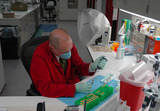
By the end of this section, you will be able to:Identify and describe the properties of lifeDescribe the levels of organization among living thingsRecognize and interpret a phylogenetic treeList examples of different sub disciplines in biology

By the end of this section, you will be able to:Identify and describe the properties of lifeDescribe the levels of organization among living thingsRecognize and interpret a phylogenetic treeList examples of different sub disciplines in biology

In this seminar you will view the environment through the lens of a research scientist that demonstrates the connectivity of living systems. You will recognize the dependency of biotic interactions as they transfer energy to sustain life. Participation in an inquiry lab will allow you to ponder about what lurks in the plants of your neighborhood and apply this understanding to managing biotic systems.StandardsBIO B.4.1.1, BIO B.4.1.2,BIO B.4.2.1,BIO B.4.2.2, BIO B.4.2.3,BIO B.4.2.4,BIO B.4.2.5
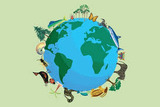
Students will utilize previously gained knowledge about the impact of land management practices on ecosystems to design, conduct and analyze an experiment to measure biodiversity and/or invertebrate ecosystem role in a field community. They will identify ecosystems that have been heavily and lightly impacted by human activities and make predictions about biodiversity in the area. They will then test and analyze the information gathered and apply what this means about the biodiversity in these ecosystems and the implications this may have on the region.

Biodiversity is a useful measure to help us understand the range of diverse species that make up our ecosystems! Calculating Species Diversity is an interactive tutorial that walks learners through the different types of species diversity and how to calculate them. Additionally, learners will gain an understanding on how human activities negatively impact biodiversity and how they can help alleviate the side effects of these actions.

Students investigate decomposers and the role of decomposers in maintaining the flow of nutrients in an environment. Students also learn how engineers use decomposers to help clean up wastes in a process known as bioremediation. This lesson concludes a series of six lessons in which students use their growing understanding of various environments and the engineering design process, to design and create their own model biodome ecosystems.

This resource is a video abstract of a research paper created by Research Square on behalf of its authors. It provides a synopsis that's easy to understand, and can be used to introduce the topics it covers to students, researchers, and the general public. The video's transcript is also provided in full, with a portion provided below for preview:
"Adaptability gives species an edge in surviving environmental changes both big and small But how different species adapt together isn’t always clear For instance, how do predator and prey adjust their interactive behavior in the face of climate change? A new predator-prey model provides some clues Researchers looked at how tweaks to offensive and defensive strategies affected predator-prey populations under two types of disturbances -- Short-term perturbations, such as extreme weather events And permanent perturbations, such as climate change They found that fast adaptation can hold population dynamics steady against these disturbances But in some cases, adaptation can worsen the effects of perturbations This finding suggests that understanding perturbation type, target, and strength matters -- Strengthening the need for tailored approaches to ecosystem management in changing environments Raatz et al..."
The rest of the transcript, along with a link to the research itself, is available on the resource itself.
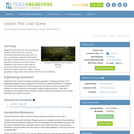
In this lesson, students find their location on a map using Latitude and Longitudinal coordinates. They determine where they should go to be rescued and how best to get there.
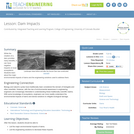
While the creation of a dam provides many benefits, it can have negative impacts on local ecosystems. Students learn about the major environmental impacts of dams and the engineering solutions used to address them.
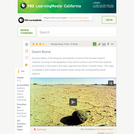
This video segment from NOVA: A Desert Place describes the physical characteristics and organisms that define the desert biome.

This lesson explores ecosystems and how living things are interconnected.

This resource is a video abstract of a research paper created by Research Square on behalf of its authors. It provides a synopsis that's easy to understand, and can be used to introduce the topics it covers to students, researchers, and the general public. The video's transcript is also provided in full, with a portion provided below for preview:
"Nitrogen is vital to aquatic ecosystems. But too much nitrogen, which can build up from fertilizer use or wastewater discharge, can be deadly. A recent study examined how two groups of nitrogen-removing bacteria interact in the hopes of discovering a synergy that can help remediate over-nitrified lakes. The two groups consisted of anammox bacteria, which feed on ammonium and release nitrogen gas and denitrifying bacteria, which do the same but feed on nitrates instead. Researchers locked the bacteria in bioreactors and monitored their activity for over a year as they fed on sediments from a nitrogen-rich lake. Findings revealed high nitrogen removal efficiencies of up to 86% for ammonium and 95% for nitrites with denitrifying and anammox bacteria showing signs of cooperation. For example, certain denitrifiers may provide amino acids and vitamins that support anammox bacteria..."
The rest of the transcript, along with a link to the research itself, is available on the resource itself.

Before they are grouped together, I will display the WebQuest on the projector screen and discuss the roles and responsibilities of the scientists, explain the rubric and expectations, and answer any question students may have. Some members may have to play more than one scientist or the members may work together to complete a scientist’s responsibilities. Each team will be randomly assigned an ecosystem and follow the process and tasks outlined in the WebQuest.


In this seminar you will use knowledge source information from prior experiences and interact in activities that will introduce you to the cost of the natural world. You will design a Public Service Announcement to analyze the best way to disseminate information about ecosystem services. You will also evaluate the effectiveness of how information is delivered in public situations.StandardsBIO B.4.1.1, BIO B.4.1.2,BIO B.4.2.1,BIO B.4.2.2, BIO B.4.2.3,BIO B.4.2.4,BIO B.4.2.5
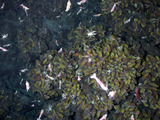
By the end of this section, you will be able to:Describe how organisms acquire energy in a food web and in associated food chainsExplain how the efficiency of energy transfers between trophic levels affects ecosystem structure and dynamicsDiscuss trophic levels and how ecological pyramids are used to model them
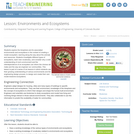
Students explore the biosphere and its associated environments and ecosystems in the context of creating a model ecosystem, learning along the way about the animals and resources. Students investigate different types of ecosystems, learn new vocabulary, and consider why a solid understanding of one's environment and the interdependence of an ecosystem can inform the choices we make and the way we engineer our communities. This lesson is part of a series of six lessons in which students use their growing understanding of various environments and the engineering design process, to design and create their own model biodome ecosystems.